#picasso Exposition
Explore tagged Tumblr posts
Text
🩷🖼️
#love#personal stuff#romania#bucharest#art#beautiful#vintage#pablo picasso#picasso#exposition#art exposition#museum#art museum#picasso Exposition#picasso effect#efectul Picasso#muzeul de arta recentă#recent art museum#travel#dark academia#dark academia vibes#dark acadamia aesthetic#old paintings#paintings#painting#classical art#classical painting#pastel#pink#pink aesthetic
6 notes
·
View notes
Text
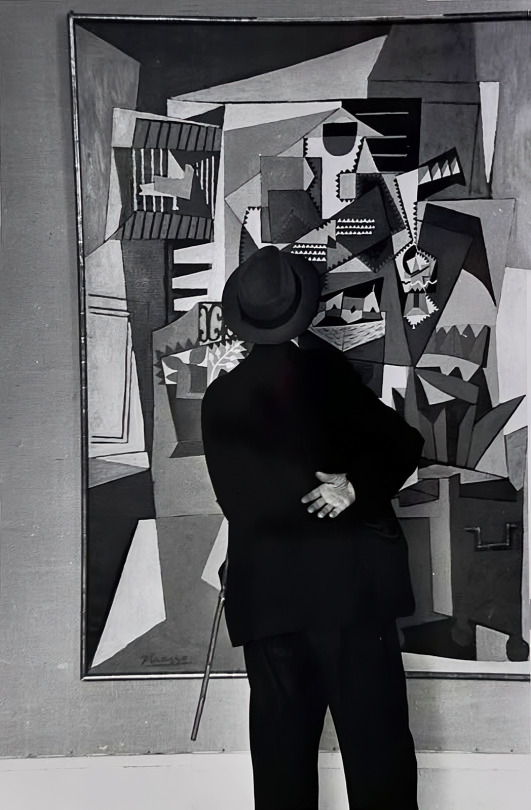
Édouard Boubat, Exposition Picasso, 1952
8 notes
·
View notes
Text

Paris, musée Picasso, 24 octobre 2023
7 notes
·
View notes
Text
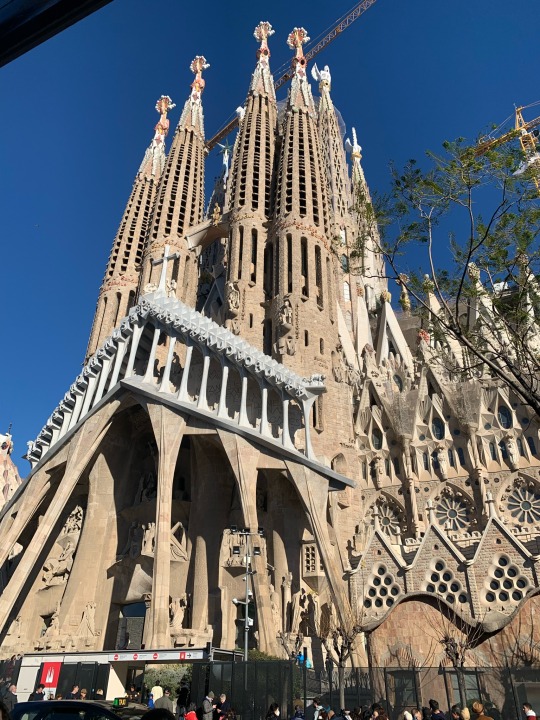


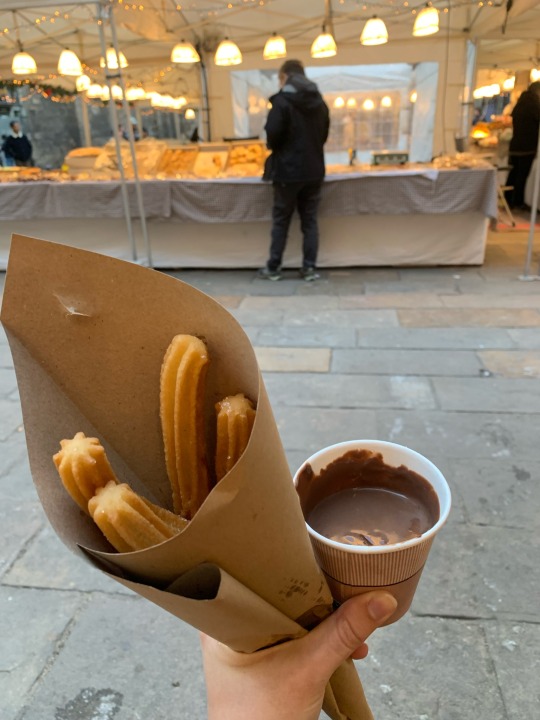

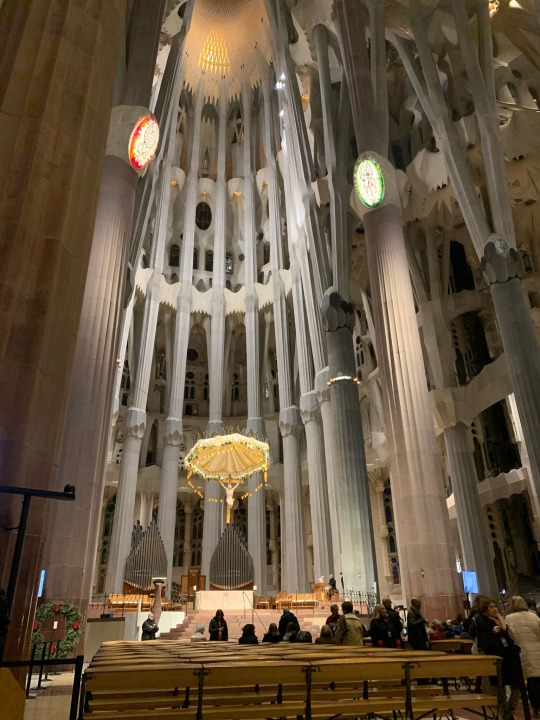




Eurotrip// Barcelona
#livingabroad journal#minee#Barcelona got 3 posts cause it’s impossible to get bored there#everywhere you look it’s breathtaking#ps: this Picasso+Miro exposition really got me#it’s about going beyond the surface
0 notes
Text
Picasso, en veux-tu, en voilà...
Picasso forever. Or at least, 50 times Picasso, 50 years after his death. I didn't see all 50 (!), I saw only 3. But I loved them all. However often we may have seen some of the works shown, they remain fascinating.
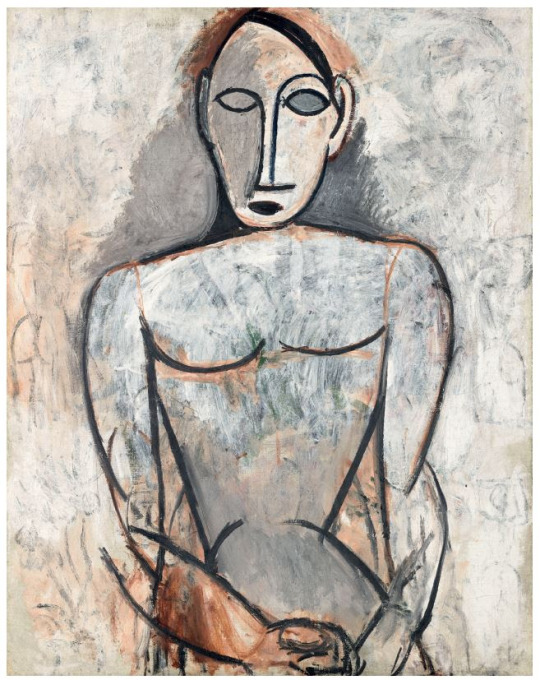
View On WordPress
#art#Célébration-Picasso#Centre Pompidou#exposition#Françoise Gilot#Gertrude Stein#musée du Luxembourg#peinture#Picasso#vaut le détour#Von der Heydt Museum
1 note
·
View note
Text
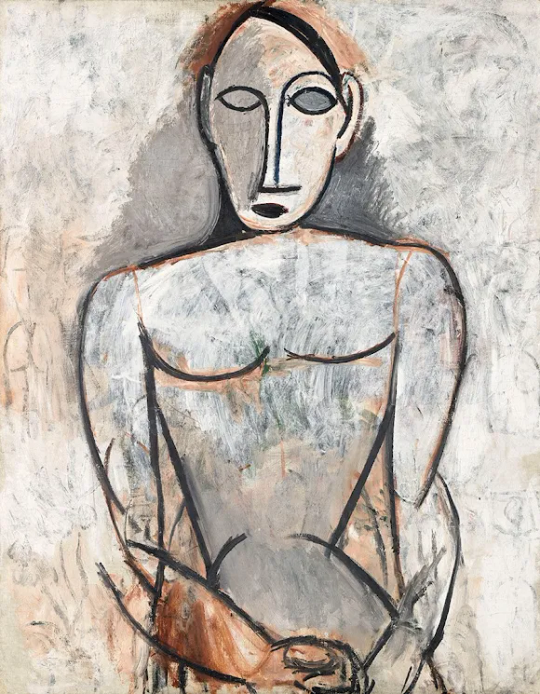
#exposition#selfartnews#galerie#art#paris#GERTRUDE STEIN ET PABLO PICASSO / MUSÉE DU LUXEMBOURG (FR)
1 note
·
View note
Note
I don't think we can expect everyone to know a lot about art on a deep level, but I do miss more info in art museums. If there are texts I find that they tend to be very surface level. I think it would be nice if either there just was given more info on the plaques in the museums, or that there would be also a sort of digital tour you could follow on your phone where you could access the info. The digital tour on your phone gives you the possibility to give way more info than you would ever put on a plaque in a museum and you don't have to try to read it with 7 people at once. I just remember that two summers ago I was walking through the National Gallery in London constantly looking up paintings and the historical events/stories they depicted. I do think, with the internet in our pockets, that the people who are interested have so much more access to art and info about them, but I still think that for permanent expositions museums could put in some more effort.
Having info about the painter, the event/story depicted, the symbolism (or interpretation of it), and some info about the materials used per painting would be nice, but I am also aware that that would end up being a huge amount of work. Non-academic people just often don't have access to academic publications, or simply don't know how to access them (I'm writing here in English, and in my experience publications in English are way easier to find for free in some way than those in Dutch, German or French, at least those I've needed, but you still don't find everything).
Interesting! There is an ongoing critical restructuring of the art museum, as they grapple with changing the ways they function. being colonial institutions invented to create a civilizing effect for the uneducated masses who suddenly are no longer at work 15 hours a day is pretty bad, right? the 18th century ruling class was extremely worried about what poor people would do with all the new leisure time + human rights they had gained after all those pesky revolutions. so enter the public, free, national art museums.

This crucial book by Duncan first criticized national art museums as a ritual space to replace the power that the church used to have: you get dressed up nicely, walk into a museum and perform an act of pseudo-worship by ascending up the giant steps, you follow a map that leads you from one room to the next, in chronological order with Italian renaissance art as the most valuable in this little micro world, and the other cultures ranked lower (looted african art at the very bottom, unless its with a picasso). You speak quietly, never point, don't stand too closely, follow the map, and NEVER run. if you step out of this order, the guards and the other guests will get angry and yell to correct you.
The museum takes the low uneducated dirty working class and teaches them how to act proper through a civilizing ritual.
Last night I told my friend a story Barbara Kruger mentions on Katy Hessel's podcast, that she gained her visual culture education in the lowest way possible, in a basement as one of the copy-paste girls who put the ads together at conde nast.


She wanted to go to museums and teach herself more about art, but felt like she could never feel clean enough to go in, her clothes felt too dirty and old. she felt like she needed to be lint rolled first. Many of my students feel exactly the same, "I can't go to the museum in sweatpants"
As a museologist, there's an idea of removing this authoritative condescendingness to art museums, and that starts by making didactics have as little of the curator's voice as possible, with just a tombstone. I'm trained to look at an artwork and immediately know the things you mentioned: the era, materials, iconographies, and the artists biography. communicating that to a student takes an entire hour every week. I do not look at didactics because I already have immediate basic info and context of every artwork, and I want to spend my time looking at the art itself. About 1% of this info is available on google/wiki.
You think museums should have a digital didactic for each object in a permanent collection? That'd be a fun initiative, essentially digitizing the work of the docent educator.
How would you feel about other visitors, instead of lining up to read a long didactic, were lining up to look between their phone and the art for a 10+ mins lecture that theyre playing at volume level 100?
Now how do you feel when I tell you the British Museum alone has over 8 million objects in its permanent collection, and doing a digital explanation for each one would take centuries if every qualified artist historian in the world worked on it.
To bring up Katy Hessel again: she does a great job at bridging this gap! She only has an undergrad level of understanding art but that actually makes her a great art communicator and instagram docent, she explains really basic things every art historian already knows, the 1% of art history you get on wikipedia but through her great voice. Museums Without Men accomplishes what you propose on a one woman level; an audio guide to the best women artists in a museum collection:

24 notes
·
View notes
Text
Patricia: omg yeahhhh ofc I love picasso, when's his next exposition btw?😀
El Cuartel and everyone watching the scene:

My husband paused the episode just in time lmao i HAD to take a picture of their reactions. Sadly Aura María's expression doesn't come out as good in the pic but i swear it was *chef's kiss* in the show.
30 notes
·
View notes
Note
What are some of your favorite manga?
Oh I am all over the place lmao. I don't read much anymore, but I'd like to if I could capture that old nostalgia! I'm annoying and have many favorites <3
First, the obvious: Sailor Moon, Yu Yu Hakusho, and InuYasha. In fact, IY was my entry manga lmao. But! I was also obsessed with CLAMP, like Cardcaptor Sakura, Magic Knight Rayearth, Wish, Angelic Layer. (I did see the Cardcaptor anime first, and the manga came later.)
I was (am?) a hardcore shojo girl. Not because I don't like shonen or anything (YYH still one of my faves of that genre), but because they were short runs. Naruto was just beginning to come out when I was a kid, and it was daunting trying to buy/store that many books. I had Zodiac P.I., Tokyo Mew Mew (and à la Mode), and Natsume's Book of Friends (my one exception to short-runs in shojo I think lmao).
I also somehow got into Zombie-Loan? I'm not sure how that happened. It's not my usual genre and I was a bit put off by some of the things that happened in the first volume but I decided to give the second one a shot and with a little more exposition it became one of my favorites as well.
And! I would be remiss if I did not include my favorite shorter runs: I Am Here! and Genkaku Picasso. I am not kidding when I say both of these manga came into my life when I needed them most. I cried all the way through both of them (they are not sad, they just hit me hard because I was so lonely). They're the only manga I own that I haven't put in storage currently because I'll reread them constantly.
12 notes
·
View notes
Text
Musées à faire en 2025
Centre Pompidou : Musée d'art moderne et contemporain.
Musée de l'Orangerie : Abrite les Nymphéas de Monet.
Musée Picasso : Consacré à l'œuvre de Pablo Picasso.
Musée Rodin : Présente les sculptures de Rodin, notamment "Le Penseur".
Musée Carnavalet : Dédié à l'histoire de Paris.
Musée de la Conciergerie : Ancienne prison, liée à la Révolution française.
Cité des Sciences et de l'Industrie : Grand musée scientifique interactif.
Muséum national d'Histoire naturelle : Comprend la Grande Galerie de l'Évolution.
Musée des Arts et Métiers : Consacré à l'innovation et à la technologie.
Musée du Quai Branly - Jacques Chirac : Art et civilisations d'Afrique, d'Asie, d'Océanie et des Amériques.
Musée des Égouts de Paris : Explore le réseau souterrain de la ville.
Musée de la Magie : Dédié à l'illusion et à la prestidigitation.
Maison de Balzac : Demeure de l'écrivain, située dans le 16ᵉ arrondissement.
Palais Galliera : Musée de la mode et du costume.
Musée de l'Opéra Garnier : Découverte des coulisses de l'opéra et de son histoire.
Musée des Arts de la Marionnette : Situé dans le parc des Buttes-Chaumont.
Musée du Vin : Situé dans d’anciennes carrières, avec une collection sur l'histoire du vin.
Musée du Chocolat (Choco-Story) : Histoire et dégustations autour du chocolat.
Maison Européenne de la Photographie (MEP) : Expositions sur la photographie contemporaine.
Musée du Jeu de Paume : Photographie moderne et art multimédia.
Musée Dupuytren : Pathologie médicale (attention, images parfois impressionnantes).
Musée de l'Homme : Anthropologie et évolution humaine, situé au Trocadéro.
Musée de la Chasse et de la Nature : Un mélange éclectique d'art et de nature.
Musée de Montmartre : Histoire bohème de Montmartre et ateliers d’artistes.
Musée des Vampires : Dédié à la mythologie des vampires (sur réservation).
Musée du Parfum (Fragonard) : Histoire de la parfumerie et des fragrances.
Musées à refaire en 2025
Musée du Louvre : L'un des musées les plus célèbres au monde, avec des œuvres comme la Joconde et la Vénus de Milo.
Musée d'Orsay : Renommé pour ses collections impressionnistes et post-impressionnistes.
Musée de l'Armée : Situé aux Invalides, il couvre l'histoire militaire française.
Musée des Arts Décoratifs : Mode, design et arts appliqués.
2 notes
·
View notes
Text
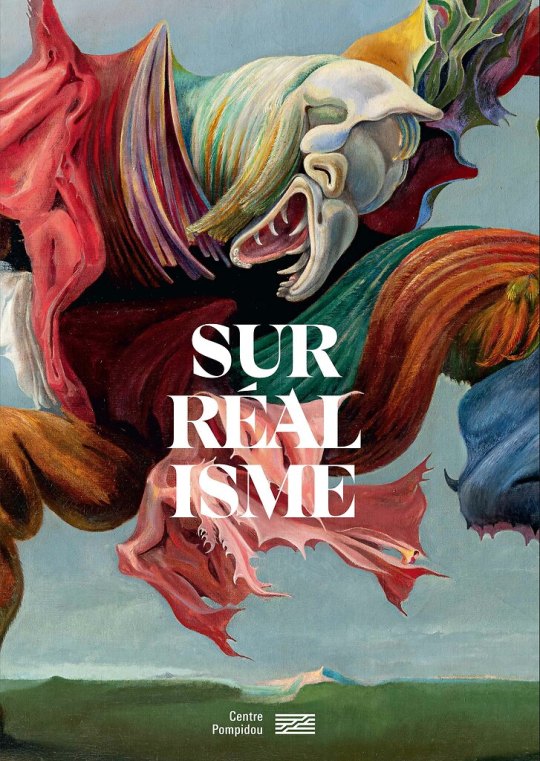
SURREALISME au Centre Pompidou - Avec près de 500 œuvres et documents, c’est une traversée magistrale du surréalisme dans l’art mais aussi dans la littérature et le cinéma. Le riche parcours thématique fait alterner salles de peinture et cabinets intimes d’arts graphiques.
Dans sa scénographie, l’exposition s’est inspirée des expositions historiques du surréalisme et de leur volonté d’émerveiller, faisant même appel à un magicien pour créer dès l’entrée une atmosphère onirique.
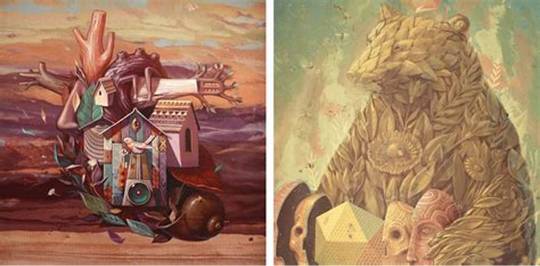
De plus, « Surréalisme » montre enfin ces artistes femmes comme Léonora Carrington, Dora Maar et Léonor Fini qui, elles aussi, ont pris part au mouvement. Rien que pour cela : bravo !

Certes. Mais 500 œuvres, c’est beaucoup pour la rétine du visiteur qui ne connaît que les artistes les plus célèbres de ce mouvement né il y a un siècle (Dali, Max, Ernst, Magritte, etc.) et qui doit découvrir pour la première fois certaines personnalités, souvent illustrées par une seule œuvre.

L’autre écueil de l’exposition est d’avoir voulu regarder trop loin dans le temps, puisque l’exposition montre des œuvres allant jusqu’aux années 1960, et trop grand dans l’espace avec l’expansion surréaliste en Amérique latine, aux États-Unis et au Japon.

Au final, on perd un peu le fil de l’histoire du mouvement. On ne comprend pas son importance sur certains artistes comme Picasso. En outre, ceux qui ont eu la chance de visiter l’exposition « La Révolution surréaliste » au Centre Pompidou en 2002 auront peut-être la nostalgie de cette sublime exposition classique, indépassable dans la réunion de chefs-d’œuvre qu’elle proposait.
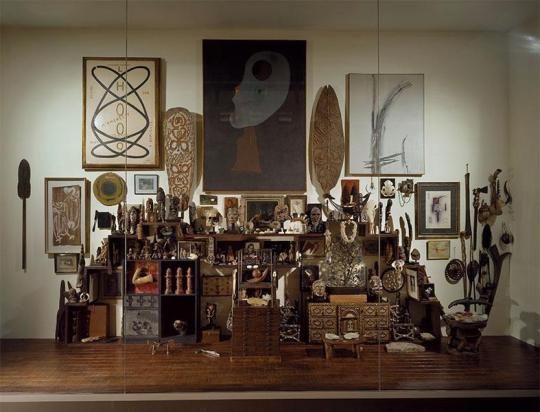
2 notes
·
View notes
Text
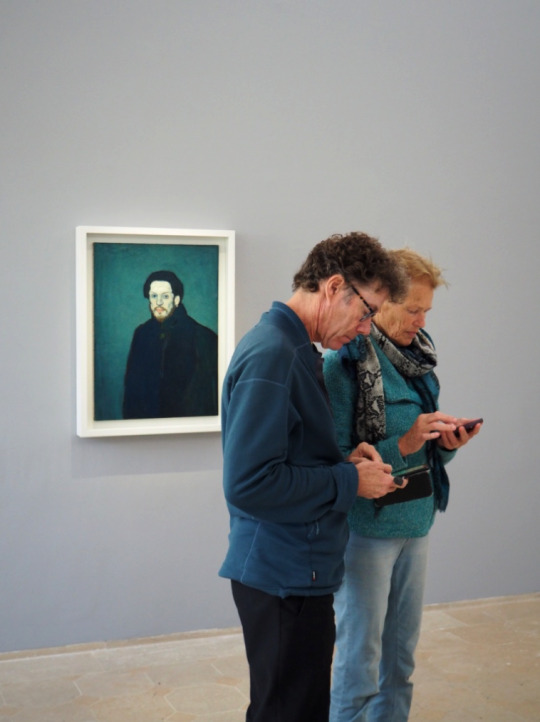
Paris, 24 octobre 2023.
#bizarre au havre#photography#exhibition#paris#pablo picasso#blue#humor#photographie#exposition#bleu#humour#museum#musée#painting#peinture
11 notes
·
View notes
Text
Comment le Centre Pompidou francilien transforme-t-il Massy en 2026 ?

Un projet culturel et architectural majeur à Massy
Le Centre Pompidou francilien, dont l’ouverture est prévue à l’automne 2026 à Massy, marque une étape décisive pour la ville et la région. Ce site de 30 000 m², baptisé « Fabrique de l’art », regroupera les réserves du musée national d’art moderne et du musée national Picasso-Paris, permettant la conservation et la restauration de plus de 120 000 œuvres d’art moderne et contemporain dans des conditions optimales. L’architecture, signée PCA-Stream, s’inspire de la célèbre « chenille » du Centre Pompidou parisien conçue par Renzo Piano et Richard Rogers, tout en s’intégrant harmonieusement au parc de la Blanchette et à son lac, offrant ainsi un dialogue entre patrimoine culturel et environnement naturel.
Des espaces ouverts et une programmation innovante
Au-delà des espaces techniques dédiés à la conservation et à la restauration, le Centre Pompidou francilien proposera une programmation culturelle riche et variée, incluant expositions, ateliers, rencontres, spectacles, projections et performances. Les visiteurs pourront également découvrir les métiers de l’art et de la création grâce à des espaces de médiation accessibles à tous. Une cafétéria et une terrasse, ouvertes sans billet, renforceront l’accessibilité et l’attractivité du site, faisant du centre un véritable lieu de vie pour Massy et ses environs.
Un levier d’attractivité pour le territoire et le marché immobilier
L’arrivée du Grand Paris Express, avec une station de la ligne 18 à seulement 200 mètres du centre, facilitera l’accès au site depuis toute l’Île-de-France et au-delà, notamment grâce à la connexion avec la ligne 14 et l’aéroport d’Orly. Cette accessibilité renforcée, couplée à l’implantation d’un équipement culturel d’envergure, dynamise l’image de Massy et favorise la valorisation de son marché immobilier. Les prix au mètre carré à Massy connaissent déjà une évolution positive, et la demande pour des biens situés à proximité du parc de la Blanchette ou du futur centre culturel devrait s’intensifier dans les prochaines années.
Un engagement collectif et une dynamique locale forte
Le projet du Centre Pompidou francilien illustre la capacité des collectivités locales, de la région Île-de-France et de l’État à collaborer pour offrir un équipement structurant au territoire. Les financements conjoints et l’implication des acteurs locaux témoignent d’une volonté partagée de faire rayonner la culture au cœur de l’Essonne et du Grand Paris. Les visites de chantier organisées pour le public traduisent aussi cette volonté d’ouverture et de dialogue avec les habitants.
Le conseil de l’agence immobilière Nicolas Immobilier
Pour les propriétaires et futurs acquéreurs, l’ouverture du Centre Pompidou francilien représente une opportunité unique de valorisation patrimoniale. L’agence immobilière Nicolas Immobilier, experte du secteur, recommande de réaliser une estimation gratuite à Massy afin de bénéficier d’une vision précise de l’évolution du marché. Grâce à une parfaite connaissance des prix m2 à Massy et à une approche humaine et personnalisée, Nicolas Immobilier accompagne chaque projet dans ce contexte de transformation urbaine, faisant de Massy une référence incontournable pour vivre, investir ou s’installer en Île-de-France.
0 notes
Text

My artwork is Pablo Picasso 1937 Guernica. Oil on canvas 11’ 5 ½” x 25” 5 ¼”
Was created to be part of the Spanish Pavilion at the International Exposition in Paris in 1937.
More of a giant poster then painting
The color scheme is to show the tragedy
It is considered one of the most moving and influential anti war paintings ever
The most prominent things in the painting are the animals, screaming, and flames.
The way I thought about the art at first did change throughout the process of me researching the piece. At first glance all you see is random shapes and you see prominent things like animals. The more you look the more you distinguish what you're looking at. You can really tell that whatever is going doesn't seem good. After researching the piece you get an understanding of what is happening and a deep backstory. The viewer gets a feel for the tragedy experienced for those living in Guernica and I personally agree that the painting is a strong movement.
1 note
·
View note
Text

MARDI 20 MAI 2025 (Billet 2 / 3)
« EXPOSITION - GEORGES MATHIEU. Geste, Vitesse, Mouvement »
La Monnaie de Paris s'associe au Centre Pompidou pour proposer une rétrospective de l'artiste Georges Mathieu, inventeur de l'abstraction lyrique et artiste prolifique.
(Titre et sous-titre extraits du dossier de presse de l’Expo)
Durée : du 11 avril au 7 septembre 2025
Ouverture : tous les jours de 11h à 18h Fermé les lundi, 1er janvier, 1er mai et 25 décembre
Tarif plein : 12€
Tarif réduit : 10€ sur présentation de l’exemplaire de la pièce de 10 francs de Georges Mathieu
Adresse : 11 quai de Conti, Paris 6e
Métro et RER : Pont Neuf (ligne 7) Odéon (lignes 4 et 10) Saint-Michel (ligne 4)
Châtelet (RER A et B) Saint-Michel Notre-Dame (RER B et C)
_________________________________
Quel bonheur de parcourir les salles quasi désertes de l’Hôtel de la Monnaie de Paris (nous avions réservé à l’heure du déjeuner mais lorsque nous avons quitté l’Expo, il y avait un peu plus de monde qui arrivait), quasiment seuls face aux œuvres, certaines, monumentales, demandant du recul pour apprécier toute la richesse de leur composition !
L’accrochage des tableaux est particulièrement réussi : les toiles « respirent », chacune installée avec suffisamment d’espace pour qu’on puisse pleinement apprécier leur puissance gestuelle, la fougue de leurs tracés, l’énergie contenue dans chaque projection de peinture (phrase inspirée du dossier de presse que nous trouvons très juste).
La sélection des œuvres exposées est remarquable, incluant la plupart des tableaux emblématiques de l’artiste (1921-2012).
Les différentes salles tracent un parcours clair qui illustre l’évolution du style du peintre. Non, Mathieu n’a pas fait que se répéter. Ce sont ses détracteurs, jaloux, qui lui ont fait cette réputation. Il a eu, comme Picasso, des périodes, avec un point commun entre toutes ses oeuvres : le « génie du geste, de l’improvisation et de la vitesse » !
Parmi les tableaux les plus impressionnants, la série des « Batailles ». Ce sont eux qu’on découvre au début de l’Expo. Ces vastes compositions rendent hommage à des moments clés de l’Histoire de France – Bouvines, Tolbiac, ou encore Yorktown – et traduisent par la seule énergie du trait la tension dramatique des affrontements. Mathieu, dans ces tableaux, peint avec une urgence quasi mystique, debout, souvent en public, comme un performeur avant l’heure (phrase inspirée du dossier de presse).
Les titres donnés par Mathieu à ses tableaux sont très particuliers, « surréalistes » parfois quand on regarde ensuite la peinture… même si, souvent, ils se justifient. N’en ratez pas la lecture sur les petites plaquettes disposées, en bas, à droite des œuvres.
L’exposition met aussi en lumière un aspect plus inattendu de son talent : son travail de designer pour des institutions et des entreprises. On découvre avec plaisir les affiches réalisées pour Air France, élégantes et dynamiques, où son langage graphique si particulier se met au service d’une esthétique du voyage. Autre surprise : le logo d’Antenne 2, simple et percutant, qui témoigne de la capacité de Mathieu à investir le champ du graphisme tout en restant fidèle à son style. Et comment ne pas évoquer la célèbre pièce de 10 Francs qu’il a dessinée en 1974 – une pièce que des millions de Français ont tenue entre leurs mains, sans forcément savoir qu’ils portaient sur eux un fragment de l’« Abstraction Lyrique ». (Ce petit paragraphe est aussi inspiré du dossier de presse).












Et puis, franchement, vous connaissez beaucoup de gens qui écrivent comme ça ? Et en plus, on lit très bien son écriture !

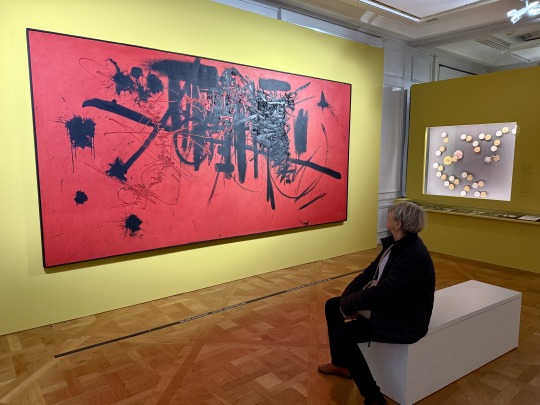




Mais la visite ne s’arrête pas là. Dans les sous-sols de la Monnaie, une seconde Exposition prolonge la rétrospective d’une façon originale. Plusieurs artistes issus du Street Art ont été invités à réinterpréter les œuvres de Mathieu sous forme de fresques monumentales. Le dialogue fonctionne à merveille : on y retrouve la même spontanéité, la même intensité graphique, transposées dans un langage urbain et actuel.
Ces deux expositions, vous l’aurez compris, nous ont BEAUCOUP plu. Georges Mathieu, trop longtemps sous-estimé, retrouve ici toute sa place dans l’histoire de l’Art moderne. Nous vous recommandons chaleureusement cette double expérience, qui vous fera redécouvrir un artiste flamboyant et libre, et toujours étonnamment actuel.




0 notes
Text
Save the date - mai 2025
Sélection des expositions à voir à Paris en ce moment. Profiter des week-end à Paris pour découvrir ces expositions au Quai Branly, au Musée d’Orsay, à la Fondation Cartier-Bresson, au musée de Montmartre, au Petit Palais, au musée d’Art Moderne ou encore au musée Picasso, il ne reste que l’embarras du choix . L’art « dégénéré » : Le procès de l’art moderne sous le nazisme » ALEXEI VON…
#Charles Frederick Worth#christian krohg#expoparis#fondation henri cartier bresson#Guo Pei#l&039;art degenere#maximilien Luce#Musée du Quai Branly#Musée Picasso#Richard Avedon
1 note
·
View note